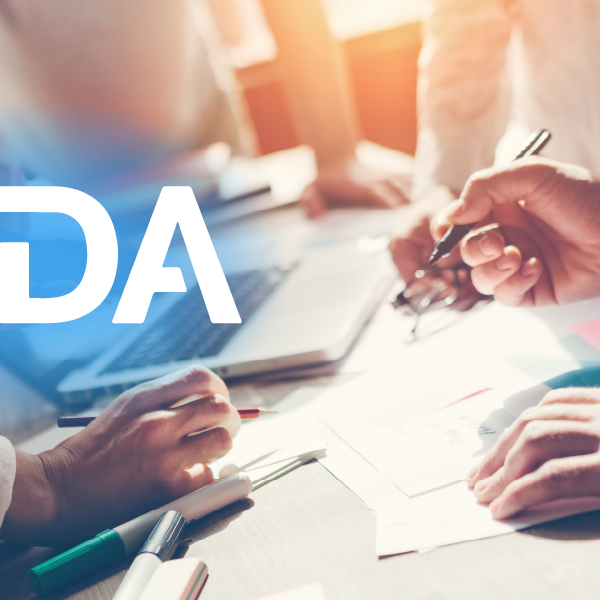Psychedelics and Regulatory Considerations Part II: A Shift in Lexicon and Implications of “Nonmedical Use” On Labelling

Recently, there has been a shift in the lexicon for psychedelics in drug development and US Food and Drug Administration (FDA) labelling guidelines. Prescribing information requires precise, accurate descriptions of essential product information to inform healthcare professionals. It is also subject to very specific word- and format-level requirements and restrictions that necessitate close adherence.
For products with serious safety risks, the FDA may require added controls that impact prescribing information, such as black box warnings. Some of our most powerful drugs come with the greatest risks; opioid analgesics, the benzodiazepine drug class, and prescription stimulants used to treat attention deficit hyperactivity disorder (ADHD) and other conditions all contain a boxed warning that includes the risks of addiction, abuse and misuse that can lead to overdose and death.
While these labelling controls are critical, it is also important to consider how precautionary language in a label can be interpreted. For those who struggle with substance use disorder (SUD), these terms “abuse”, “misuse,” and “addiction” can be directly stigmatizing by creating inaccurate thoughts that these individuals are dangerous, incapable of managing treatment, or at fault for their condition. Stigmatizing language can also negatively influence healthcare providers perceptions and the care a patient with a SUD may receive as a result.
These concepts are especially important for the emerging drug class of psychedelics where many drugs have illicit counterparts, resulting in opportunities for confusion between the Good Manufacturing Practice (GMP) pharmaceutical product and illicit, unregulated drug. These drugs have historically been stigmatized and may require additional degrees of sensitivity to ensure the safe and effective use of the pharmaceutical products in the community.
Understanding the potential for nonmedical use and appropriately distinguishing nonmedical use from development of SUDs will be a key regulatory hurdle in the near future. Thus, FDA labelling precedents will be of upmost importance.
Effecting Change
Like many mental disorders, SUD has had inherited challenges for healthcare providers to appropriately diagnose and conceptually distinguish symptoms demonstrating “abuse” from “dependence.” Historically in the context of SUD, abuse was classified as a mild or early phase stage of SUD that may manifest to dependence as a more severe stage of SUD. In practice, this is difficult to classify with many factors.
Our prognosis of SUD has evolved to and evidenced in the American Psychiatric Association’s (APA) Diagnostic and Statistical Manual of Mental Disorders (DSM), which is a widely recognized handbook for healthcare providers to diagnose and classify mental disorders. The 5th edition (DSM 5) released in 2013 made substantial revisions SUD’s classification in chapter “Substance-Related and Addictive Disorders.” In DSM-5, SUD combined categories “substance abuse” and “substance dependence” into a single disorder measured on a continuum from mild to severe.
The revised definition of SUD as a single diagnosis will better match the symptoms that patients experience. Since clinicians are generally the first points of contact for a person with a SUD, use of non-stigmatizing language maintains the integrity of the individual as a human being and distinguishes the person from their diagnosis.
Some examples of neutral tone are provided below:
| Previous Lexicon | Revised Lexicon |
|---|---|
| Abuse | For Illicit Drugs: UseFor Prescription Medications: Misuse, when used other than as prescribed |
| Addict | Person with SUD |
| Clean | Tested negative |
| Former Addict | Person in recovery |
| Reformed Addict | Person who has previously used drugs |
| Substance or drug abuser | Patient |
Implications for Labelling
- Section 9.1: Controlled Substance (specifies drug scheduling)
- Section 9.2: Abuse (specifies types of nonmedical use, susceptible patient populations, and the adverse reactions that can occur)
- Section 9.3: Dependence (specifies the amount of drug or exposure time period that can cause the characteristic effects from psychological and/or physical dependence, tolerance, or both)
FDA Status with Terminology Adoption in Lexicon
The FDA released a blueprint in October 2023 for healthcare providers involved in treatment and monitoring patients with pain which advised on core messaging when communicating with patients with SUDs. In order to reduce this stigma, the FDA has committed to using the term ‘‘nonmedical use’’ to refer to use of a medication in a way other than as directed by a health care provider, including both misuse and abuse.
This blueprint has also been updated in places to use the medical terms “substance use disorder” and “opioid use disorder” rather than “addiction.” Comparisons of the definitions are described in the table below.
| Definitions from Opioid REMS (2023) | Definitions from the FDA Guidance (2017) | |
|---|---|---|
| Nonmedical Use –Use of a medication in a way other than as directed by a health care provider, including both misuse and abuse, as defined previously | Misuse | Intentional use, for therapeutic purposes, of a drug by an individual in a way other than prescribed by a health care provider or for whom it was not prescribed |
| Abuse1 | Intentional non-therapeutic use of a prescription drug, even once, for its rewarding psychological or physiological effects | |
| Substance Use Disorder – cluster of behavioral, cognitive, and physiological phenomena that may include a strong desire to take the drug, difficulties in controlling drug use (e.g., continuing drug use despite harmful consequences, giving a higher priority to drug use than other activities and obligations), and possible tolerance or physical dependence | Drug addiction1 | a cluster of behavioral, cognitive, and physiological phenomena that may include a strong desire to take the drug, difficulties in controlling drug use (e.g., continuing drug use despite harmful consequences, giving a higher priority to drug use than to other activities and obligations), and possible tolerance or physical dependence. |
| Physical dependence | state that develops as a result of physiological adaptation in response to repeated drug use, manifested by withdrawal signs and symptoms after abrupt discontinuation or a significant dose reduction of a drug | |
| Psychological (psychic) dependence | state in which individuals have impaired control over drug use based on the rewarding properties of the drug (ability to produce positive sensations that increase the likelihood of drug use) or the psychological distress produced in the absence of the drug | |
| Tolerance | state that develops as a result of physiological adaptation characterized by a reduced response to a specific dose of drug after repeated administration of the drug (i.e., a higher dose of a drug is required to produce the same effect that was once obtained at a lower dose). | |
-
- Abuse and addiction are the terms that were redefined in the DSM-5 and are in the process of being updated by regulatory agencies to “nonmedical use” and “substance use disorder”, respectively. Other terms like dependence or tolerance are summarized in the definition of SUD, but may still appear separately elsewhere in regulatory documents.
It is currently unclear whether FDA has adopted these terms across the agency. MedDRA, the US legal code, previous FDA guidance, and precedent labels and REMS currently have not adopted these proposed terms. While the FDA has not updated relevant prescribed labelling regulations or guidance to adopt using “nonmedical use” instead of “abuse” and “misuse,” we hope for a change in the near future.
Sponsors developing products in the central nervous system (CNS) space should take note that the FDA requires the potential for nonmedical use must be assessed for any investigational new drug that has CNS activity.
MMS is continually monitoring this space as it impacts the regulatory requirements that sponsors must meet. MMS has regulatory expertise in supporting sponsors with precedent labelling needs.
For questions on this and other Regulatory services, please click here and we will connect you with the appropriate expert.
To read part I of this series, please visit this Link.
References
- https://www.psychiatry.org/File%20Library/Psychiatrists/Practice/DSM/APA_DSM-5-Substance-Use-Disorder.pdf
- https://www.fda.gov/media/173774/download?attachment
- https://nida.nih.gov/nidamed-medical-health-professionals/health-professions-education/words-matter-terms-to-use-avoid-when-talking-about-addiction
- FDA Education Blueprint for Health Care Providers Involved in the Treatment and Monitoring of Patients with Pain | October 2023
- eCFR :: 21 CFR 201.57 — Specific requirements on content and format of labeling for human prescription drug and biological products described in § 201.56(b)(1).
Authored by:
- Sydney Sheltz-Kempf, Medical Writer, Regulatory and Medical Writing
- Jay Malmo, Principal Regulatory Scientist, Regulatory Affairs











